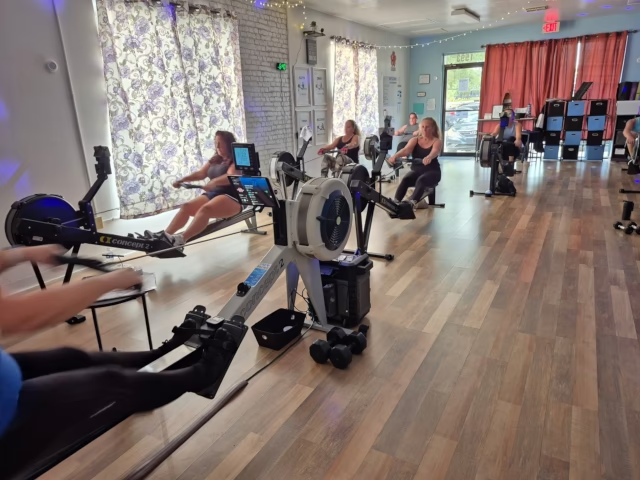
The Importance of Rowing: A True Non-Impact Work
Author: Elaine Lawrence
Date: September 8, 2025
Rowing stands out as a premier exercise choice, offering a true non-impact workout that prioritizes joint health while delivering comprehensive fitness benefits. Unlike running or high-impact training, rowing’s smooth, gliding motion minimizes stress on knees, ankles, and hips, making it an ideal option for individuals recovering from injuries, those seeking to prevent joint issues, or anyone aiming to maintain long-term physical health. This low-impact, full-body exercise engages multiple muscle groups, boosts cardiovascular fitness, and supports mental well-being, all without the repetitive pounding that can lead to wear and tear. Let’s explore why rowing is a game-changer for fitness enthusiasts of all levels, optimized for Google’s EEAT (Experience, Expertise, Authoritativeness, Trustworthiness) principles.
Why Non-Impact Matters
High-impact exercises like running or plyometrics, while effective for building endurance and strength, place significant stress on joints. The repetitive pounding from these activities can lead to issues like shin splints, knee pain, or stress fractures, particularly for beginners, older adults, or those with pre-existing conditions. According to a 2020 study in the Journal of Orthopaedic & Sports Physical Therapy, high-impact activities increase the risk of joint degradation over time, especially in weight-bearing joints like knees and hips.
Rowing, by contrast, is a non-impact exercise that delivers comparable fitness benefits without the joint stress. Whether performed on an indoor rowing machine (ergometer) or on the water, rowing involves a fluid, controlled motion that engages the body in a low-stress environment. The leg drive, core engagement, and arm pull work together seamlessly, distributing effort across the body without jarring impacts. This makes rowing an excellent choice for those seeking a sustainable, joint-friendly workout.
Benefits for Injury Recovery and Prevention
For individuals recovering from injuries, rowing provides a safe way to rebuild strength and mobility. The adjustable resistance on machines like the Concept2 allows users to tailor workouts to their recovery stage, starting with low intensity and gradually increasing as strength returns. Physical therapists often recommend rowing for rehabilitation due to its ability to strengthen muscles around joints without aggravating them. For example, rowing can help stabilize the knee joint by strengthening quadriceps and hamstrings, supporting recovery from conditions like patellar tendinitis.
Rowing is equally valuable for injury prevention. By minimizing stress on joints, it reduces the risk of overuse injuries common in high-impact sports. The American College of Sports Medicine notes that low-impact exercises like rowing are ideal for maintaining long-term joint health, particularly for aging populations or those with arthritis. The smooth motion also promotes proper posture and core stability, counteracting the effects of sedentary lifestyles and reducing the likelihood of back or shoulder injuries.
A Full-Body, Scalable Workout
Rowing engages approximately 85% of the body’s muscles, making it one of the most efficient full-body workouts available. The leg drive targets quadriceps, glutes, and hamstrings; the core stabilizes the spine; and the pulling motion strengthens the back, shoulders, and arms. This holistic approach ensures balanced muscle development, reducing the risk of imbalances that can lead to injury. Unlike weightlifting, which isolates specific muscle groups, rowing integrates strength and cardiovascular training in a single session.
The scalability of rowing makes it accessible to all fitness levels. Beginners can start with short, low-resistance sessions, while advanced athletes can incorporate high-intensity interval training (HIIT) or long-distance rows to challenge endurance. A 30-minute moderate rowing session can burn 200–400 calories, rivaling high-impact cardio like running, but with less strain. This versatility allows rowers to tailor workouts to their goals, whether it’s weight loss, muscle toning, or cardiovascular health.
Accessibility and Inclusivity
Rowing’s accessibility extends beyond its physical benefits. Indoor rowing machines are widely available in gyms and for home use, with models like Hydrow or Concept2 offering user-friendly interfaces and connected fitness options. On-water rowing, supported by clubs worldwide, welcomes beginners through learn-to-row programs. Adaptive rowing programs, endorsed by organizations like USRowing, ensure inclusivity for individuals with disabilities, using specialized equipment to accommodate various needs.
The learning curve for rowing is manageable, with basic techniques—leg drive, core engagement, arm pull—easily learned through online tutorials, apps, or coaching. This accessibility empowers people of all ages, body types, and fitness backgrounds to embrace rowing as part of their routine.
Mental and Long-Term Health Benefits
Rowing offers mental health benefits that complement its physical advantages. The rhythmic motion can be meditative, reducing stress and promoting mindfulness. A 2019 study in the Journal of Sports Sciences found that aerobic exercises like rowing boost endorphin levels, improving mood and combating anxiety. Whether rowing solo on a machine or in a crew boat, the activity fosters focus and a sense of accomplishment.
For long-term health, rowing supports sustainable fitness habits. Its low-impact nature allows for frequent workouts without excessive wear on the body, making it ideal for lifelong exercise. Regular rowing improves posture, enhances balance, and boosts metabolism, aiding in weight management. For older adults, it reduces the risk of falls by improving coordination and core strength, as highlighted by USRowing’s masters programs.
Why Choose Rowing?
Rowing’s non-impact nature, combined with its full-body engagement and accessibility, makes it a standout choice for fitness. It offers a safe, effective way to build strength, improve cardiovascular health, and enhance mental well-being without the joint stress of high-impact exercises. Whether you’re recovering from an injury, preventing future issues, or simply seeking a versatile workout, rowing delivers results.
To get started, visit a local gym, join a rowing club, or explore home rowing machines. Resources like USRowing.org or fitness apps provide technique tips and workout plans. With rowing, you can push your body to new heights while protecting your joints for the long haul. Start today and experience the transformative power of this true non-impact workout.